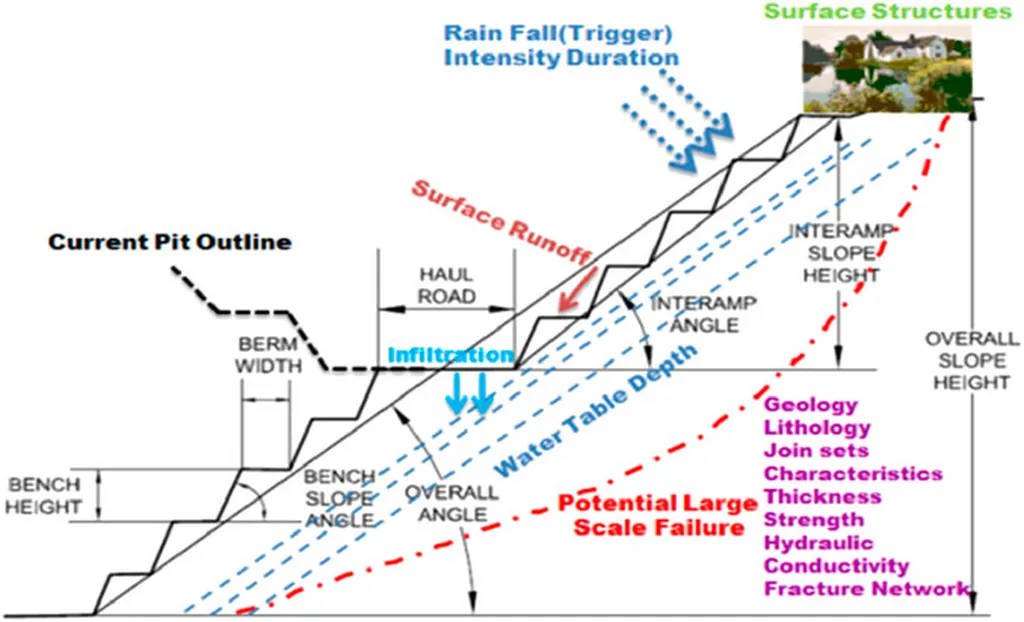In the ever-evolving landscape of construction and geological safety, a groundbreaking method for assessing slope stability has emerged, promising to mitigate risks and enhance safety in large-scale infrastructure projects. This innovative approach, developed by Wan-Rui Hu of the Changjiang Survey, Planning, Design and Research Co. Ltd. in Wuhan, China, combines game theory with an improved cloud matter-element model to provide a more accurate and reliable evaluation of slope stability.
The traditional methods of slope stability assessment often suffer from ambiguities and inaccuracies, leading to potential risks of geological disasters. Hu’s research, published in *Engineering Reports* (translated from Chinese as *Engineering Reports*), addresses these challenges by introducing a comprehensive evaluation method that minimizes deviations and enhances the reliability of results.
At the heart of this new method lies the integration of subjective and objective weights. “By using the improved analytic hierarchy process (IAHP) and anti-entropy weight (AEW), we can effectively reduce the bias that comes from relying on a single weighting method,” explains Hu. This dual approach ensures a more balanced and accurate assessment of the evaluation indexes, which are carefully selected based on principles of scientificity, rationality, representativeness, feasibility, and coefficient of variation.
One of the most significant advancements in this research is the application of game theory to determine the comprehensive weight of the evaluation indexes. This innovative use of game theory allows for a more dynamic and adaptive assessment process, reflecting the complex and interconnected nature of geological factors.
The finite interval cloud matter-element model further enhances the accuracy of the evaluation by addressing the ambiguity inherent in traditional methods. By taking the expectation of multiple solutions as the final evaluation result, this model provides a clearer and more reliable assessment of slope stability. Additionally, the introduction of a confidence factor allows for the measurement of the reliability of the results, adding an extra layer of assurance for engineers and project managers.
The practical implications of this research are substantial, particularly for the energy sector, where large-scale infrastructure projects often involve complex geological conditions. “This evaluation model has significant engineering application value in assessing slope stability and can provide a reference basis for slope treatment and prevention of safety accidents in the later stages of projects,” says Hu.
The research has already been applied to three slopes in an engineering example, with promising results. The stability levels of slope K1 and K3 were found to be basically stable, while the stability level of K2 was stable. These results, which align with the actual situation, demonstrate the correctness and effectiveness of the model.
As the construction industry continues to evolve, the need for accurate and reliable slope stability assessments becomes increasingly critical. Hu’s research offers a significant step forward in this field, providing a robust and adaptable method for evaluating slope stability. This innovative approach not only enhances safety and reduces risks but also supports the efficient and sustainable development of large-scale infrastructure projects.
In the words of Hu, “This model can provide a reference basis for slope treatment and prevention of safety accidents in the later stage,” underscoring the practical and far-reaching impact of this research. As the industry continues to embrace new technologies and methodologies, the insights gained from this study will undoubtedly shape the future of slope stability assessment and geological safety.

